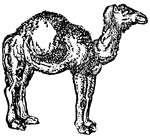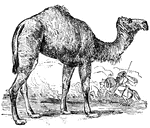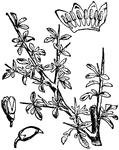Clipart tagged: ‘Arabia’

Camel
Two-humped camels are found in Central Asia, while one-humped camels are domesticated and found in Arabia…

Camel
Two-humped camels are found in Central Asia, while one-humped camels are domesticated and found in Arabia…

Leopard
The leopard (Felis pardus) is a carnivore closely allied to the lion and the tiger, but differing it…

Myrrh
"Myrrh, is the name given to a gum resin which exudes from a shrub growing in Arabia and Abyssinia,…

A Scene In Arabia
An illustration of an outdoor scene in ancient Arabia. Pictured are camels, shepherds, and others going…
